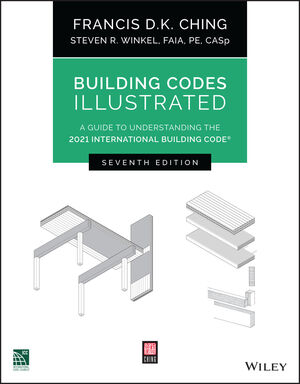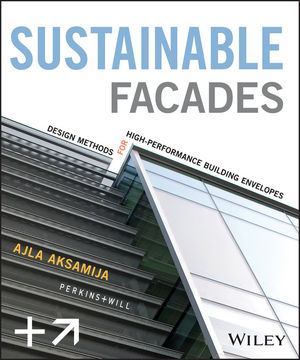A pattern of severe storms in the nation’s Southeast the past few years has turned the subject of resilient design into a hot topic for the building industry. Broadly defined, it encompasses design solutions for commercial and residential structures that will resist hurricanes, typhoons, flooding, droughts, wildfires, earthquakes and landslides, even terrorism. Architects, engineers and builders, as well as politicians and city planners are embracing the concept.
True “sustainability” today is about being green and environmentally aware, but also about withstanding the test of time and nature. Sustainable design includes resilient design solutions that will help buildings weather the elements successfully. With ongoing climate change and the resulting catastrophic weather events, resilient design has become more critical—protecting structures as well as lives, and minimizing the massive economic impact of such events. Certainly, it represents a tremendous market opportunity for construction and building material manufacturers.
Creating Smarter Exteriors for Storm Protection
Stricter building codes have contributed to improved resilient design, but so have innovative building products and systems. Exterior insulation finish systems and air moisture barrier products have been available for decades, and in fact have always been a resilient design solution, but they weren’t necessarily referred to as such.
As EIFS have evolved, so has the market for advanced solutions for exterior cladding options that protect against hurricane and tropical storm winds, water intrusion and windborne debris (missile impact). Exterior walls may be susceptible to damage and can result in building envelope failure in such storms. In most cases, windows will fail before the exterior wall, so one of the key components of good resilient design is an air/moisture barrier with connections and transitions that integrate the window and penetration points allowing for a monolithic barrier across the entire building. Since 1995, industry leaders have been offering “specialty systems” (now referred to as resilient design) especially hurricane impact systems, for coastal construction. These innovative wall systems offer even more wind-and-water-related structural protection and are increasingly a resilient design solution of choice.
Hurricanes threaten North America frequently, striking coastal areas. Storms such as Katrina, Wilma, Sandy and Matthew endangered lives and inflicted costly damage on the populated areas where they hit. Since 2000 alone, twenty-one hurricanes have struck the U.S. coastline, generating $135 billion in insurance losses, costly business disruptions, and billions of taxpayer dollars spent on disaster management.1
The more than 50 percent of the American population who account for 58 percent of the nation’s gross national product live or work in coastal counties1; these hurricane-prone areas call for well-sealed buildings that also allow for adequate drainage. Severe wind load, heavy precipitation and ground level flooding all need to be addressed.
Using specialized EIFS, AMBs and other exterior wall products and systems to enhance design resiliency can provide protection from some of the most severe weather conditions in North America involving high-wind events and moisture intrusion. Hurricane protection systems for exterior walls can be economically installed on a variety of substrates including metal frames with gypsum sheathing, wood or steel frames with plywood sheathing or concrete masonry. Many of these are also available in a wide range of decorative and protective wall finishes so that form doesn’t have to be sacrificed to function.
Product quality, installation details, testing approvals, quality assurance programs and technical service are all critical elements in evaluating an HI system. The best hurricane impact systems will tout a proven Design Pressure Rating (psf)—the higher the psf the better—and will meet state and regional code requirements. For instance, in South Florida, these wall systems should meet the stringent High Velocity Hurricane Zone provisions of the Florida Building Code at specified design pressures, as well as have Miami-Dade County Notice of Acceptance and Florida Statewide Product Approval.
Investing in Design Resilience Makes Economic Sense
In addition to ensuring structural protection and public safety, there are significant economic benefits to investing in these design solutions, and the following case studies illustrate them.
With a modest capital investment in improved resilience, Marriott Vacation Club International upgraded a single property in Florida and saved an estimated $135 million in insurance costs. By using an exterior skin to improve structural performance during high-wind events, Marriott was able to protect its property from wind-borne missile damage and water intrusion.
Water intrusion causes the most damage and results in the biggest property underwriting losses. These, in turn, directly impact the time and labor costs for repair and the capacity of a given property to generate revenue. To meet the Highly Protected Risk wind load criteria, the exterior skin details for the Marriot resort had to demonstrate a capacity to withstand wind speeds of 150 mph (which converts to 58 psf).
Zurich, MVCI’s insurance company, utilized the resilient design upgrades to develop a program that allowed them to reduce claims related to missile impact and moisture intrusion resulting from high wind events; this translated into reduced insurance premiums. This case was later presented by Zurich to the U.S. Homeland Security & Government Affairs Committee as an example of the benefits of proactive resilient design.
Lido Beach Towers on Long Island, N.Y., a condominium community also known as “The Pink Lady,” is another example of resilient design that resulted in energy savings of up to 33 percent as well as enhanced structural protection. An EIFS retrofit strategy for this aging and deteriorating building not only restored it to its former glory, but has also protected the exterior structure from potential hurricane damage.
The 80-year-old building was riddled with water leaks (more than 100), the heat pump sleeves were rusted and, condensation had leaked into the interior walls; air leaks were just as pervasive. “Band-aid fixes” (surface treatments) were no longer working. The solution was to entirely re-clad the property with an EIFS-with drainage model—or water-management EIFS. Using a StoTherm Premier Next r EIFS system, the entire building was thermally wrapped in a new “green skin” of 3-inches by 4-inches of insulation which was far more cost-effective than making cosmetic fixes with no return on investment. The non-intrusive nature of the EIFS “second skin” approach also allowed the retrofit to be made while the building remained occupied and operational.
Lido project contractors had to address the inherent unevenness of the building surface. A Z-channel arrangement composed of two attached L-angles (10-foot sections of 18 gauge galvanized steel) were placed vertically on the building at 16-inch intervals. The Z-channel configuration offered a flat surface to which the second angle could be affixed, providing a flat and plumb surface to which DensGlass Gold sheathing could be mounted. After a dew point analysis, engineers concluded they needed to minimize airflow behind the DensGlass with a waterproof air barrier as the final layer before applying the EIFS.
Not long after the retrofit, Lido Beach Towers was slammed by Superstorm Sandy. The entire beach area was swept into the project; the bottom floors were completely inundated with water and sand (there was sand up to the ceiling of the first floor) but the exterior structure survived. The EIFS wall structure suffered virtually no damage. The property owners were stunned, but also delighted with the building’s resilience.
What Sto furnished for this project—and what codes now require—is a process by which rough window openings are protected before the window goes in to deflect water away from the wall. Installed with vertical ribbons of adhesive, incidental water, in the event it penetrates the EIFS, can drain between those ribbons and drain to the exterior. Since the system is easy to install, using familiar materials, a contractor doesn’t have to deviate from the usual EIFS model except to add StoGuard and apply the adhesive in a vertical pattern for drainage.
The Future
Resilient design requires multi-faceted, long-term thinking, not just worse-case scenario weather planning, but common, everyday wear and tear, as well—especially when you consider that the average life-span of a commercial building is 70 years. The economic value of investing in resilient design cannot be underestimated. In new construction or renovation, employing resilient design solutions will save money long-term, while also providing energy efficiency and environmental benefits. The right advanced wall system will keep a building air tight, and also help protect against catastrophic weather.
Resilient design has been embraced by the sustainable building movement (there are now LEED credits for resilient design), and incorporated into pending legislation (The National Mitigation Investment Act) will allow states to pass stronger building codes to encourage more resilient infrastructure design and provide additional funding to help do so.
As the climate changes, along with codes and other conditions, so will our industry. We will continue to address these challenges applying the latest science and technology to ensure that the nation’s buildings are safe and sound.
Foot Note
- Moser, S.C., M. A. Davidson, P. Kirshen, P. Mulvaney, J. F. Murley, J. E. Neumann, L. Petes, and D. Reed, 2014: Ch. 25: Coastal Zone Development and Ecosystems. Climate Change Impacts in the United States: The Third National Climate Assessment. J. M. Melillo, Terese (T.C.) Richmond, and G. W. Yohe, Eds., U.S. Global Change Research Program, 579-618. doi:10.7930/J0MS3QNW.
LIDO TOWER
- 3-5/8", 18 ga. Steel Studs at 16-inches on-center.
- 5/8" Thick GP DensGlass Gold fastened with No. 8 x 1-1/4"
- Corrosion-Resistant Bugle-Head Screws Spaced at 8" on-center Along Studs and System Perimeter
- Sto Armor Mat XX (20 oz.) High-Impact Reinforcing Mesh Embedded in Sto BTS-Plus, #15 Grade D Building Paper
- 2.5 lb/yd2 Self-Furred Galvanized Expanded Metal Lath
- 5/8" Thick Sto Powerwall Stucco
- Sto Mesh Embedded in Sto BTS Plus
- Sto Powerwall Finish
- HVHZ Design Pressure: ± 125 p.s.f.









